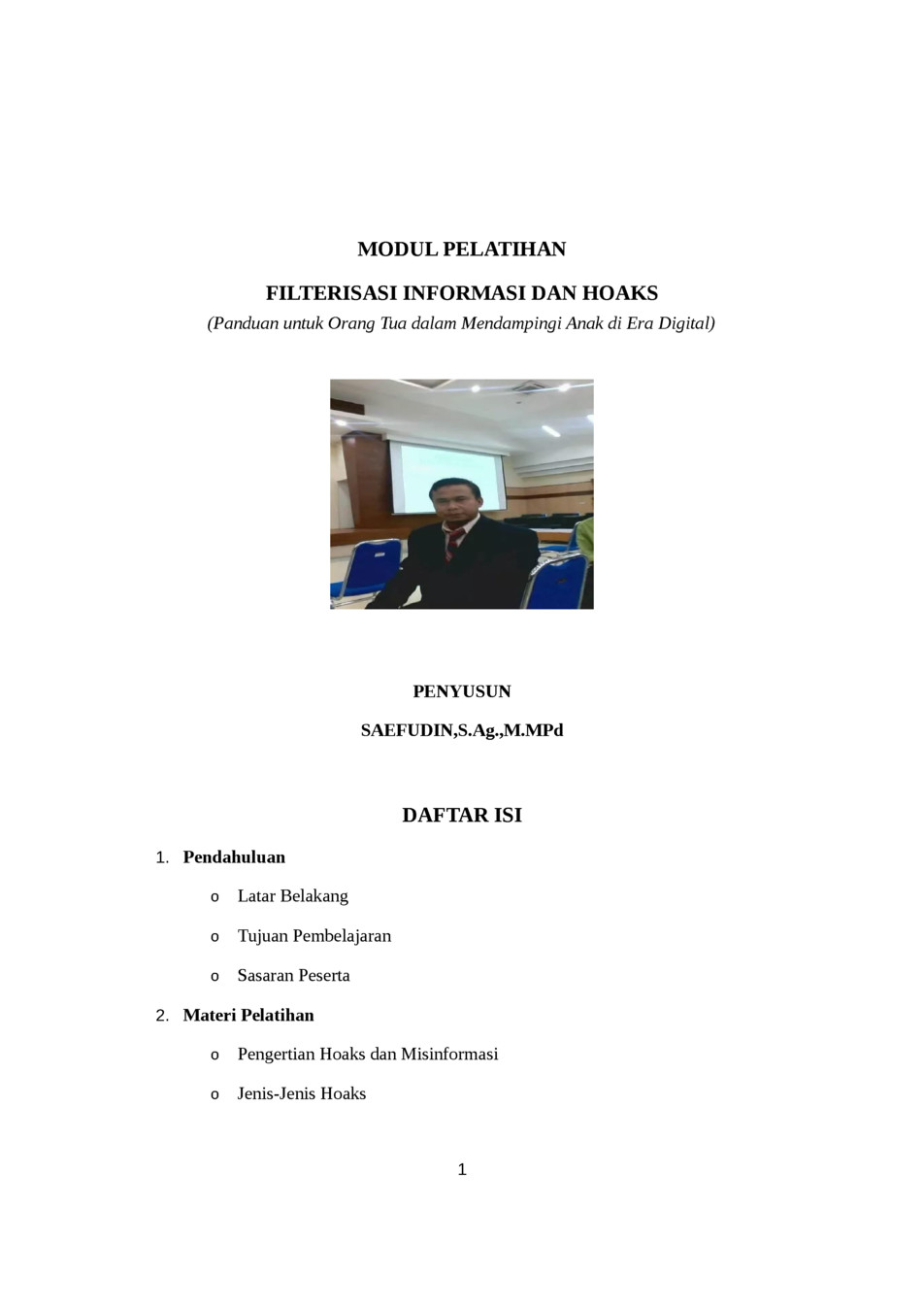FILTERISASI INFORMASI DAN HOAKS
FILTERISASI INFORMASI DAN HOAKS
Summary of "Filtering Information and Hoaxes Training Module"
Introduction
In the digital era, the rapid spread of information through social media, websites, and messaging applications has led to the circulation of hoaxes and misinformation. These false pieces of information can mislead, cause panic, and influence people's decisions. It is crucial for parents to equip themselves with the skills to filter information in order to guide their children in the digital world (p. 1).
Training Material
The training module covers the definition of hoaxes and misinformation, different types of hoaxes, the impact of hoaxes in the digital world, and smart ways to filter information. Examples of hoaxes include misleading content, fake content, manipulative content, and satirical content. The module also emphasizes the negative effects of hoaxes, such as causing panic, damaging public trust, leading to wrong decisions, and triggering social conflicts. Techniques for detecting hoaxes are discussed, along with case studies and simulations for practical application (p. 2-4).
Evaluation and References
The training concludes with an evaluation through a short test and a practical task of identifying a hoax online and verifying its accuracy. The references provided include resources from the Ministry of Communication and Information of Indonesia, UNESCO, Google News Initiative, and Turn Back Hoax - MAFINDO, offering further insights into digital literacy and combating misinformation (p. 5).

